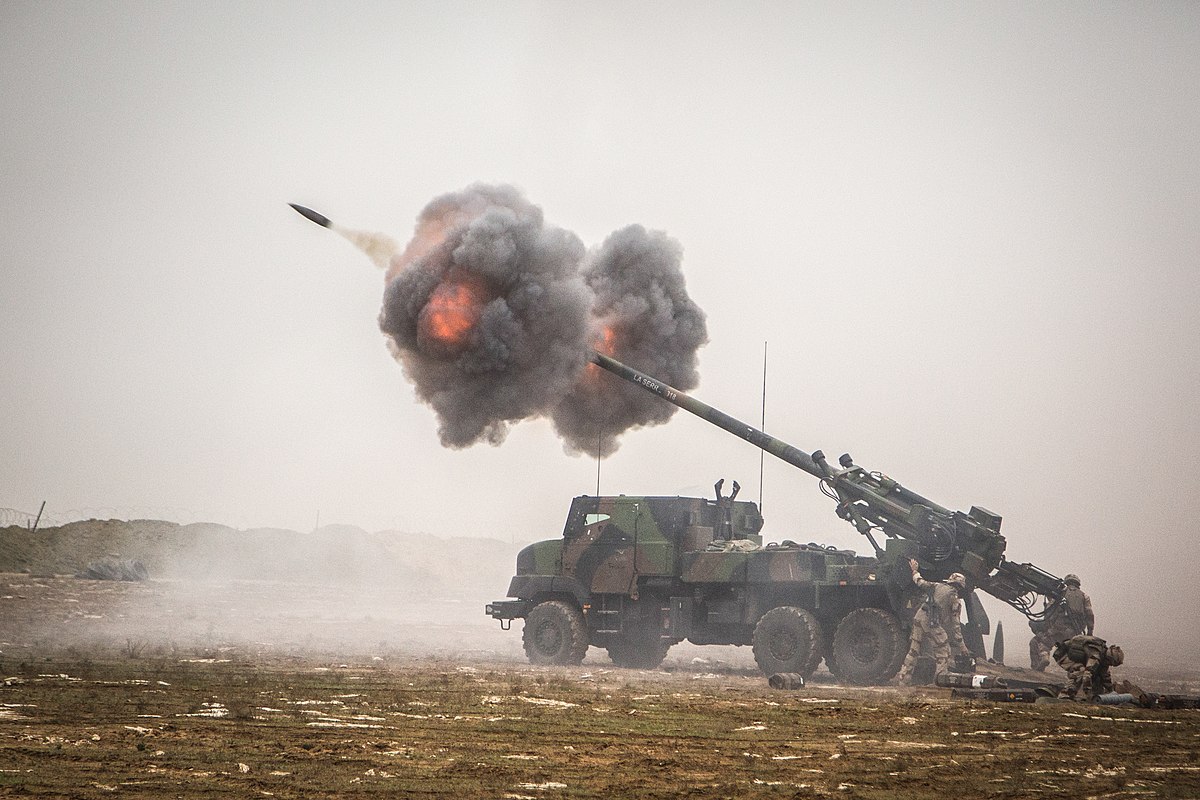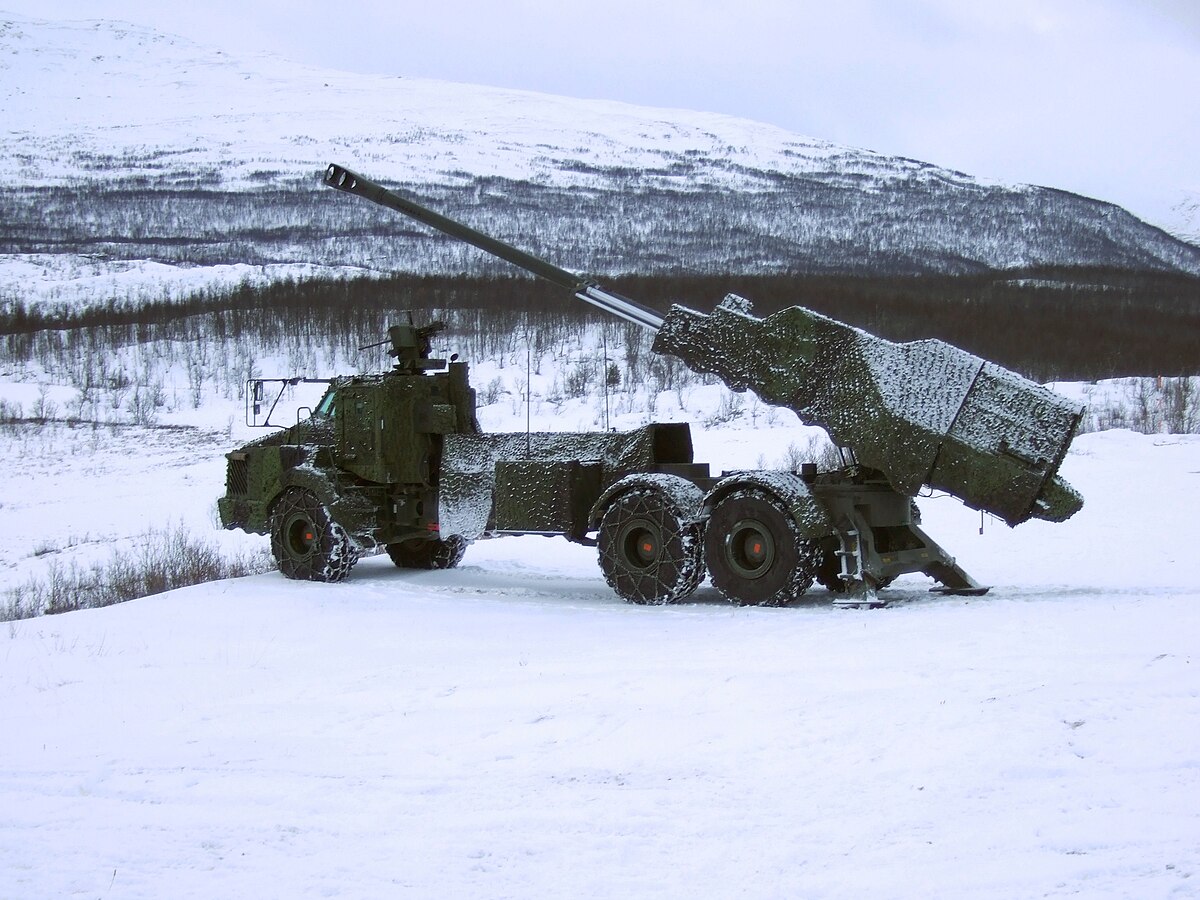- Reaction score
- 23,609
- Points
- 1,260
Except for electronics. But I guess you could drop 77 sets on folks from a drone…Nothing is ever really obsolete....

Except for electronics. But I guess you could drop 77 sets on folks from a drone…Nothing is ever really obsolete....
Except for electronics. But I guess you could drop 77 sets on folks from a drone…
Will a 77 still transmit morse?

Tell that to the people that cut up our M109s.
In answer to your question: No. I never will get over that.


I think it’s a shaded view of Ukraine circumstances. There is terrain that a Light towed Howitzer can utilize than tracked and wheeled SPA cannot use.Wasn't exactly sure in which thread to put this, but it's a very interesting article suggesting the days of towed artillery may be over.

Artillery goes trucking to survive drones swarming the battlefield
The war in Ukraine has put long-range fires front and center at the Eurosatory defense show that kicks off in Paris on June 17.www.defensenews.com
The lower cost of wheels over tracks will matter for countries seeking to build up their artillery force, Beaudouin said. France agreed to buy 109 Caesar MkII weapons at the end of 2023 for a unit cost of €3.2 million (U.S. $3.5 million), compared with Germany buying 10 tracked Panzerhaubitze 2000s in March 2023 for €18.4 million (U.S. $20 million) apiece.
Operating and maintaining wheeled systems also tends to be cheaper, with studies from the U.S. and Europe indicating cost savings of roughly 30%.
The six-wheel Caesar and Atmos models are flyweights compared with their armored and tracked brethren, which explains their mobility and lower operating costs. The French gun comes in at less than 18 tons, and its Israeli rival at about 20 tons, (Edit - C130 transportable) compared with 57 tons for the Panzerhaubitze and 47 tons for the K9.
The turret on the RCH 155 adds bulk as well, pushing the weight to 39 tons. Tactical mobility for wheeled systems drops once loads exceed 8 tons per axle, according to Beaudouin, who said the Boxer chassis struggles under the weight of a gun turret.



I think it’s a shaded view of Ukraine circumstances. There is terrain that a Light towed Howitzer can utilize than tracked and wheeled SPA cannot use.
It also solely looks at a static fight. - which we’ve already seen that Towed guns can be dig in very successfully.
Honestly I tend to ignore half the comments that people make about this warI have seen several Ukrainian (and one or two Russian) sources argue that towed guns are more survivable in that theatre.
I think the only way to get good data - is looking at specific places and times to determine an apples/apples correlation.The basic premise is that the SP guns (wheeled or tracked) are larger and harder to hide from UAV observation. If they try to use shoot-and-scoot tactics, this requires some movement in the open, which increases the odds that they will get spotted and tracked and by a drone. Towed guns, on the other hand, can be hidden in a woodline and dug in, which gives them a reasonable chance of avoiding detection and surviving any attempted counterbattery efforts.
You are correct in identifying that the relatively static nature of the front skews this somewhat. Digging guns in is only possible when the front isn't moving very often. That wouldn't be possible if the front had much greater mobility and the guns were required to keep up with moving forces.
Honestly I tend to ignore half the comments that people make about this war
I think the only way to get good data - is looking at specific places and times to determine an apples/apples correlation.
Too often a lot of the data is compressed from across the combat theatre - and the threats are equal across it, as well they shift in times depending on the use of the equipment, and the enemy assets in the AO.
Plus the range differences between 105mm, 155mm, 130mm and 152mm guns don't make for a solid method of comparisons unless you can really get into the weeds to sort everything individually.
A lot of data won't be fully compiled until after the war...
It's the right thread, but IMHO, the days of wheeled guns is far from over.Wasn't exactly sure in which thread to put this, but it's a very interesting article suggesting the days of towed artillery may be over.

Artillery goes trucking to survive drones swarming the battlefield
The war in Ukraine has put long-range fires front and center at the Eurosatory defense show that kicks off in Paris on June 17.www.defensenews.com

I haven't seen any details recently, but over the life of this project since around 2008 (almost always unfunded and at various priority levels) the concept included hybrid RegF/ResF crews - with the 2010 Arty MIP for Force 2013 the predicted establishment was for an LRPRS battery in 4 GS to have 156 PYs and 25 ResF (5 launcher dets)
Not howitzers but very interesting.
I have never heard that. Each of Wainwright, Suffield and Gagetown have longer ranges not to mention that HIMARS can fire the M28 series of reduced-range practice rounds.Of course the fact that it could only really be shot in Shilo is an awkward fact
One advantage of having crews inside a cab, armoured or not, is the reduction in health consequences of being around artillery pieces being fired. For towed 155mm has any studies been done on the effect of distance from muzzle and the inclusion of muzzle brakes onto the human physiology?
Looking at longterm effects, it may be cheaper to get guns like the Archer to reduce exposure to the gun crews from pressure waves.


That's incorrectOf course the fact that it could only really be shot in Shilo is an awkward fact
